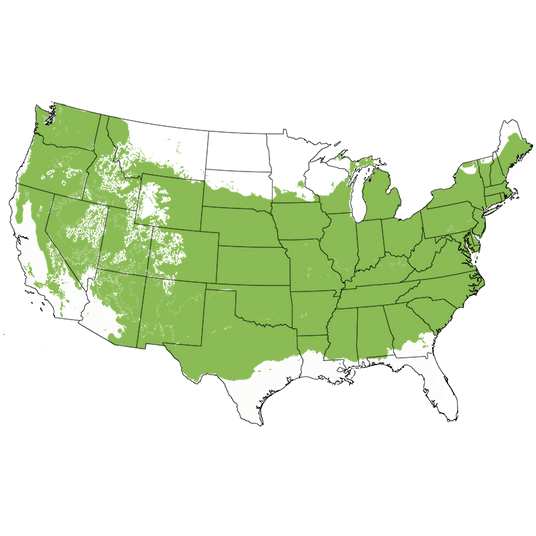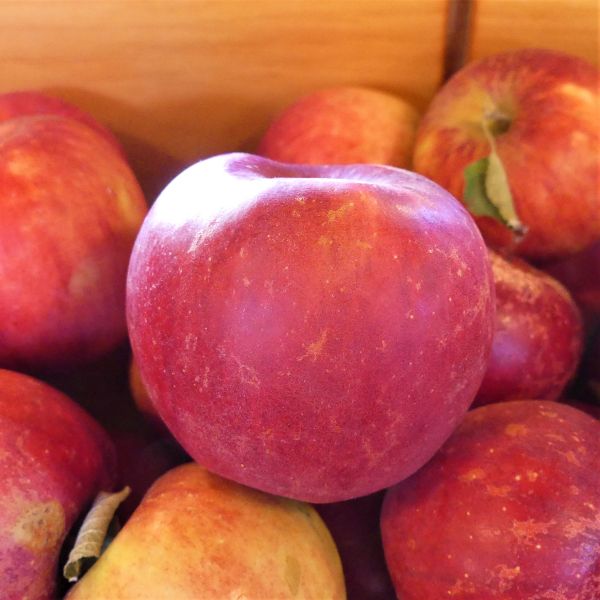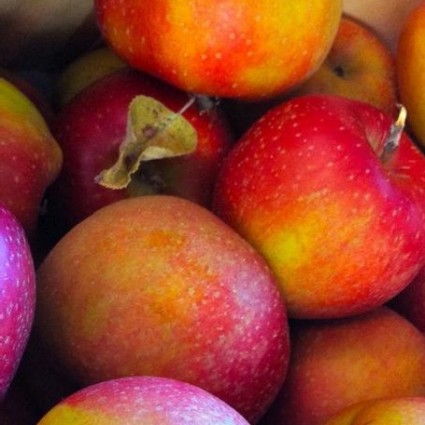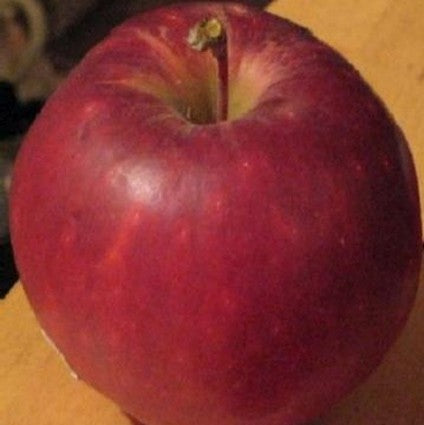Winesap Apple Tree
Malus 'Winesap'
- Stay Protected with Plant Sentry ™
Winesap Apple Tree - #3 Container 4-5 Feet is backordered and will ship as soon as it is back in stock.
Plant Sentry™
Plant Sentry™

Plant Sentry™ Protected
Your order is protected by our compliance system that:
- Prevents restricted plants from shipping to your state
- Ensures plants meet your state's agricultural requirements
- Protects gardens from invasive pests and diseases
Delivery and Shipping
Delivery and Shipping
Delivery and Shipping
Fast, Safe Plant Delivery
Ships in 3-4 business days • Tracking provided • Weather protected
| Under $50 | $9.99 |
| $50 - $99.99 | $14.99 |
| $100 - $149.99 | $16.99 |
| $150 - $198.99 | $24.99 |
| $199+ | FREE |
✓ Zone-specific timing • ✓ Professional packaging • ✓ Health guarantee
Understanding Plant Options
Nature Hills offers plants in two main formats:
- Container Plants: Grown in pots with soil, sized by container volume and plant age
- Bare Root Plants: Dormant plants without soil, sized by height measurements
Container Plant Sizes
Container sizes indicate plant age and growing capacity rather than liquid volume equivalents. Our containers follow industry-standard nursery "trade gallon" specifications, which differ from standard liquid gallon measurements.
Young Plants (6 months to 18 months old)
| Container Size | Actual Volume | Metric Equivalent |
|---|---|---|
| 2" x 2" x 3" | 0.18 - 0.21 dry quarts | 0.20 - 0.23 dry liters |
| 4" Container | 0.31 - 0.87 dry quarts | 0.35 - 0.96 dry liters |
| 4.5" Container | 0.65 dry quarts | 0.72 dry liters |
| 6" Container | 1.4 dry quarts | 1.59 dry liters |
| 1 Quart | 1 dry quart | 1.1 dry liters |
| 5.5" Container | 1.89 dry quarts | 2.08 dry liters |
Established Plants (18 months to 2.5 years old)
| Container Size | Actual Volume | Metric Equivalent |
|---|---|---|
| 2 Quart | 2 dry quarts | 2.2 dry liters |
| #1 Container | 2.26 - 3.73 dry quarts | 2.49 - 4.11 dry liters |
| 5" x 5" x 12" | 3.5 - 4.3 dry quarts | 3.85 - 4.74 dry liters |
Mature Plants (2-4 years old)
| Container Size | Actual Volume | Metric Equivalent |
|---|---|---|
| #2 Container | 1.19 - 1.76 dry gallons | 5.24 - 7.75 dry liters |
| #3 Container | 2.15 - 2.76 dry gallons | 8.14 - 12.16 dry liters |
Large Plants (3-5 years old)
| Container Size | Actual Volume | Metric Equivalent |
|---|---|---|
| #5 Container | 2.92 - 4.62 dry gallons | 12.86 - 20.35 dry liters |
| #6 Container | 5.25 - 6.01 dry gallons | 23.12 - 26.42 dry liters |
| #7 Container | 5.98 - 6.53 dry gallons | 26.34 - 28.76 dry liters |
Bare Root Plants
Bare root plants are sold by height from the root system to the top of the plant. Plants may exceed minimum height requirements.
Common Sizes:
- Trees: 1 foot, 2 feet, 3 feet, 4 feet, 5 feet, 6 feet
- Shrubs & Perennials: 1 foot, 18 inches, 2 feet
Important Notes
Container Volume Specifications
- Trade Gallon Standard: Our containers follow industry-standard "trade gallon" specifications established by the American National Standards Institute (ANSI Z60.1) for nursery stock
- Volume Variations: Actual soil volume may vary due to plant root systems and growing medium settlement
- Age Indicators: Container size primarily indicates plant age and maturity rather than liquid volume equivalents
Growing Conditions
- Plant size can vary based on variety and growing conditions
- Container size helps indicate plant maturity and establishment level
- Larger containers generally mean more established root systems and faster landscape establishment
Seasonal Availability
- Bare root plants are available seasonally when dormant
- Container plants are available throughout the growing season
- Specific varieties may have limited availability in certain sizes
Questions?
For questions about specific plant sizes or availability, please contact our plant experts who can help you choose the right size for your landscape needs.
Plant Highlights
Winesap Apple Tree highlights at a glance!
-
Botanical Name
-
Brand
-
Growing Zones5, 6, 7, 8
-
Growth RateModerate
-
Mature Height
-
Mature Width
-
Leaf Color
-
Flower Color
-
Fall Color
-
Pollinator FriendlyYes
-
Pollinator Required
-
Bloom PeriodLate Spring
-
Harvest Time
Characteristics
Where To Plant
When To Prune
- Late Winter
Water & Moisture Needs
- Moderate
Sunlight Needs
Soil Needs
- Widely Adaptable

Growing Zones 5-8
A Sweet Slice Of History With A Tangy Twist
Bring home a timeless treasure with the Winesap Apple Tree (Malus 'Winesap'), a classic heirloom variety beloved since the 1700s for its crisp, tangy-sweet flavor and striking red-blushed fruit! This long-revered Apple offers the perfect blend of old-fashioned charm and modern orchard performance, bursting each spring with fragrant pinkish-red blooms that call to pollinators before setting a heavy crop of golden-yellow fruit tinged with red.
Also known as Stayman Winesap, this moderately crisp Apple features juicy, yellow flesh streaked with red veining and a wine-like tang that’s both refreshing and complex. Expect fruit from September to October that’s firm, flavorful, and perfect for fresh eating, juicing, baking, and drying. Best of all, the harvest keeps beautifully for up to three months in cold storage!
This antique variety has deep American roots, first grown in the 1700s and refined in the 1800s to become one of the most reliable heirloom Apples ever cultivated. Belonging to the Rose family, this historic tree connects generations of orchard lovers and remains a staple in the modern home landscape.
>>Jump to Planting & Care Instructions
Key Features
- Heirloom variety with rich history
- Gorgeous yellow fruit with red blush
- Tart-sweet, wine-like flavor and crisp, firm texture
- Fragrant pinkish-red spring blooms
- Heavy, consistent fruit production
- Harvest September to October
- Excellent storage life (up to three months)
- Moderate disease and rust resistance
- 600–800 chill hours
- Requires a pollinator (Gala, Fuji, Red Delicious, or Golden Delicious)
Landscaping Uses
The Winesap Apple Tree isn’t just productive, it’s ornamental too! Its spring blooms are a showstopper, blanketing branches in pinkish-red blossoms that attract bees, butterflies, and admiring neighbors alike. The upright, oval shape adds elegance and structure to gardens, borders, and orchards.
Perfect for adding color, shade, and fresh produce to your landscape, this heirloom variety makes an ideal centerpiece or accent planting and brings seasonal beauty from spring through fall.
- Home orchards and edible landscapes
- Specimen or accent tree for front yards
- Privacy rows or living fences
- Shade near patios, gardens, or play spaces
- Pollinator-friendly mixed plantings
Care & Maintenance
Hardy in USDA growing zones 5–8, the Winesap Apple Tree is a deciduous fruit tree that thrives in full sun and well-drained soil. It’s moderately easy to grow and will reward you with decades of delicious harvests and vibrant blooms.
- Planting Time: Plant bareroot trees in early spring as soon as the ground can be worked. Plant container-grown trees anytime during the growing season before extreme heat.
- Sun Requirements: Full sun (6+ hours daily) for best bloom, fruit set, and flavor.
- Soil Requirements: Prefers dry, sandy, well-drained soil. Avoid clay or poorly drained soil to prevent root issues.
- Moisture Needs: Keep evenly moist using the Finger Test. New trees need consistent water access in their first year.
- Mulch: Apply a 3–4 inch layer of bark chips or wood mulch. Helps conserve moisture and protect roots. Learn how and why to mulch your plants.
-
Fertilization Needs:
- Begin fertilizing in the second year each spring.
- Use a slow-release organic fertilizer designed for fruit trees.
- Avoid too much nitrogen to prevent soft growth.
-
Pruning Info:
- Prune fruit trees in late winter or early spring while dormant.
- Remove dead, damaged, or crossing branches.
- Open the canopy for air circulation and sunlight.
- Summer prune to shape, remove suckers, and deadhead.
- Renewal pruning: Every few years, remove older wood to promote new fruiting growth.
- Pollination Needs: Requires another Apple Tree for pollination. Best partners: Gala, Fuji, Red Delicious, or Golden Delicious.
- Chill Hours: Requires 600–800 chill hours for proper flowering and fruit set.
- Special Perks:
- Moderate disease resistance and rust tolerance.
- Excellent keeping quality and vigorous growth.
- Fragrant blooms attract pollinators.
Don’t forget to order your Nature Hills Root Booster for lifelong mycorrhizal symbiotic root support!
A Vintage Variety That Still Wows
Grow your own slice of history with the Winesap Apple Tree, a hardy, productive heirloom that brings beauty, flavor, and nostalgia to your garden. From its blushing blooms to its tangy-sweet fruit, Winesap is a delicious classic you’ll enjoy for generations.
Order your Winesap Apple Tree from Nature Hills today and start savoring the rich, crisp flavor of this heritage favorite right from your backyard orchard!
Very Long Tradition as an Excellent Cider Apple
As apples go, Winesap traces itself back in American history to the early 1800. This was back in the days when apples were consumed more as cider, rather than eating fresh from the tree. The first notations of the Winesap are from the well-known Dr. James Mease in 1804, the man who is also credited with introducing Soy into the United States.
During this time before water sanitation, drinking water was often not healthy and could lead to death. Fermented Apple Cider purified common water-borne diseases and was the preferred beverage to avoid the sicknesses associated with drinking water.
Dr. Mease recommended the Winesap as a fine choice for cider in his 1804 tome, Willich's Domestic Encyclopedia of Philadelphia, saying "WINE-SOP is an autumn fruit, of deep red colour, and sweet, sprightly taste, makes excellent cyder, which is preferred by some to that of Red Streak." A copy of this book was given to Thomas Jefferson.
The variety was also praised for its great storage life up to 6 months, good size, disease resistance and great eating quality. Its popularity grew into the 1800's as one of the finest apples for hard and sweet cider.
With all the wonderful attributes, the Winesap also became a popular variety for cross hybridization. Many popular varieties of the 1800's would come with Winesap as its parent. Most noted were two varieties still popular today: the Arkansas Black and the Stayman-Winesap.
In 1866, Dr J Stayman of Leavenworth, Kansas planted out several of his Winesap Seedlings and sent selections to different nurseries in 1868. One of the selections that was sent to Charles Downing first produced fruit in 1875. It was determined to be a very special selection and Downing promptly named it in honor of Stayman.
The Stayman-Winesap became a popular apple around 1890 and was touted as an all-around superior choice to the parent Winesap in all regards. Stayman-Winesap is highly regarded for its vigorous growth of both root and top. It boasts large and luxuriant foliage and produces a continual fruit crop of excellent size and flavor. Stayman-Winesap continued to be one of the most popular varieties planted from the East Coast into the Midwest until the early 1960's.












